Friends, I plant my first seeds this week. I’ve been looking forward to this day since December, when I received my seed orders and made my planting and seed starting plans for 2021. Yes, I made them six months early.
I was excited, okay. Get off my back.
It’s now just under 11 weeks til my last frost date. So tomorrow, I and some rosemary seeds I’ve been cold stratifying for about 2 weeks have a date with some seed starting mix. We’ve also just set up my seed starting station in the basement, complete with grow lights and heat mats, so I plan to share more about that soon! It’s been a great antidote to the winter storm that’s currently hammering us.
If you’re growing from seed for the first time and are feeling overwhelmed at managing all your different plants’ timing needs – or if you’re just better at restraining yourself than I am – read on. Today I’m sharing two freebies for developing a seed starting plan, one analog, one digital.
Figuring out when to start your seeds is really pretty basic.
First, you need to know your last frost date. You can look that up here.
(Note: some sites will suggest sowing dates based on your hardiness zone – don’t follow these recommendations. All your hardiness zone tells you is your average lowest temperature. Hence why Ohio, parts of New Mexico and parts of Maine are all in Zone 6A. My last frost date is April 30. Taos County, NM’s is May 22. If someone in Taos tried to follow my recommendation, their seedlings would get leggy and stressed before it was safe to plant them out because they sowed them too early.)
Then, your seed packet should list the number of weeks before your last frost date a seed should be sowed indoors.
For example, most tomatoes say to start 6-8 weeks before your last frost date.
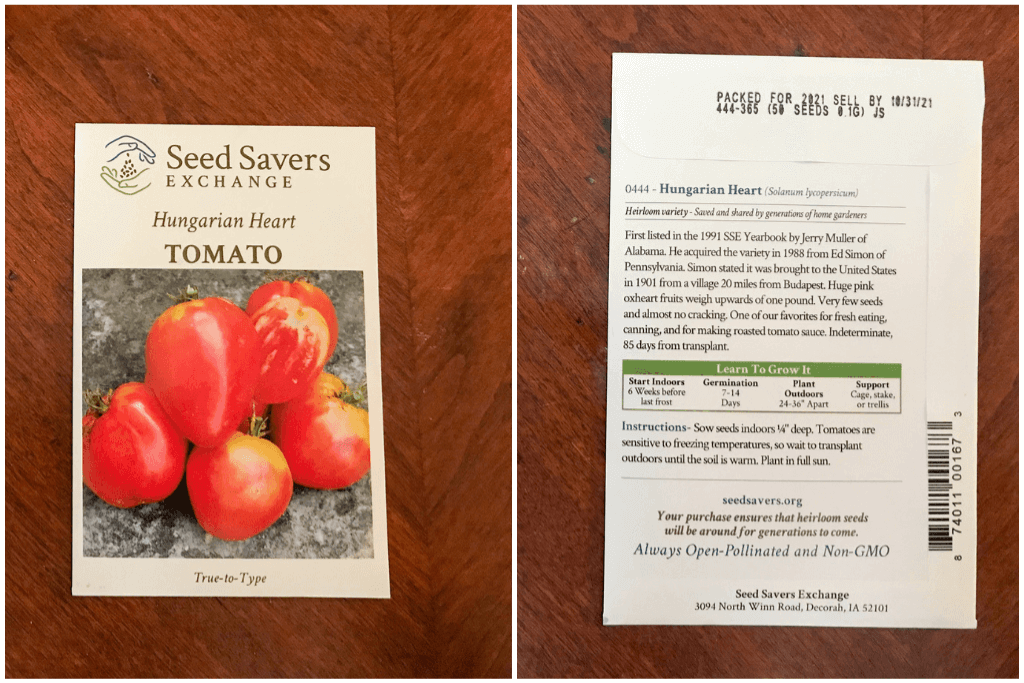
Once you’ve found that recommendation, you just count backwards from your last frost date and presto!
Plant on that date. Of course, if you’re planting 10-20-50 varieties of vegetables, it’s not quite so simple.
Enter: a Seed Starting Plan.
I’d highly suggest putting together a little schedule for yourself with all the info you’re going to need, so you don’t have to be looking it up over and over. Some things you might track: the plant variety, how many weeks ahead it should be started, what that date range is for you, the date you actually start it, how many seeds/cells you plant and how many you want. You might also include your safe transplant date and any special instructions like cold stratifying or soaking the seeds ahead of time. Room for notes of things you want to remember for next year is also handy.
…Now that I look at it in text, that seems like a lot, so how about a demonstration:
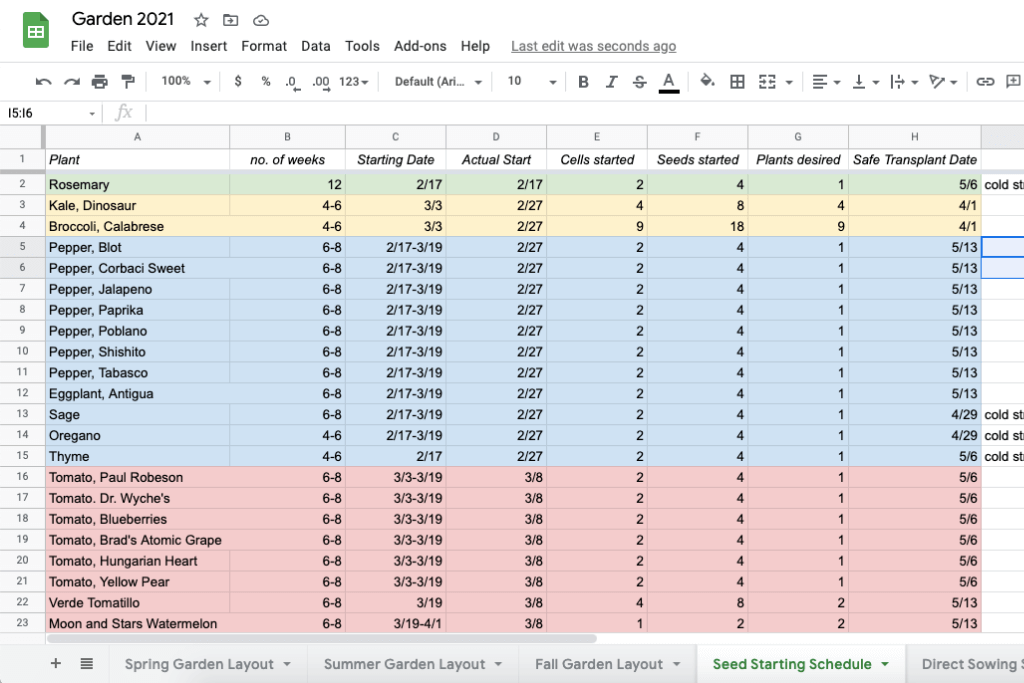
You’ll see I’ve also color-coordinated mine so I can see what all I’m planting on the same day.
You can do something similar for plants you’re direct sowing. Here, again, you’ll see I’ve listed the plant variety, a suggested planting date and a column to record the date I actually plant. And then info on the number of seeds I wind up sowing and the number of plants I ultimately want. The 1s in the “seeds started” column and the plant names in italics are ones I’m experimenting with. I plan to direct sow some and start some indoors to compare which works best for my set-up/climate.
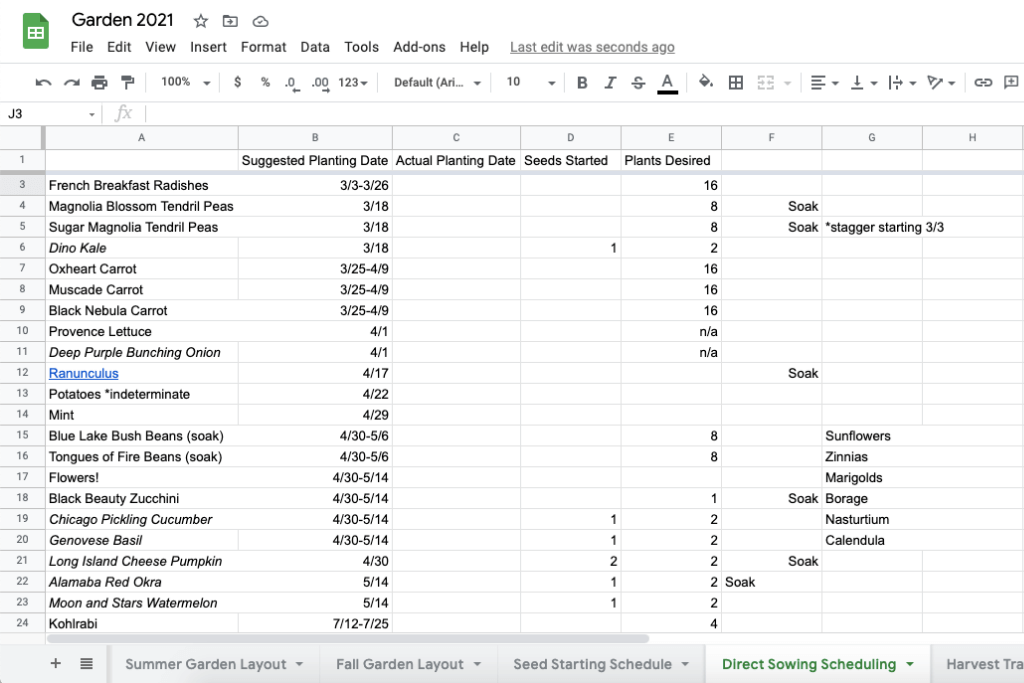
I’ve found this google doc super helpful.
I basically developed this seed starting plan at the same time as I worked on my garden layout. You can see I also have tabs for my spring, summer, and fall gardens. This way I can compare from season to season to make sure I don’t plant something in spring that will take too long to mature and get in the way of my summer transplants.
Then as I added a plant to the layout, I could add it to the direct sowing or seed starting plan as well. At that point, I would go back to the layout and add the date to either sow or transplant. I also have details about my planters and trellising plans on here, just so everything is easily accessible.
It’s simple, but this kind of organization just makes my heart happy. It’s also given me something garden-related to occupy myself in these long winter months. I’ve rearranged my garden layout at least a dozen times, and I’m still tweaking it. I’m trying to pack as much food as I can into only two beds, so it’s a sort of modified version of a square foot garden. Come July, I’ll probably regret how tightly the plants are packed and learn my lesson for next year, but this is a year for experiments.
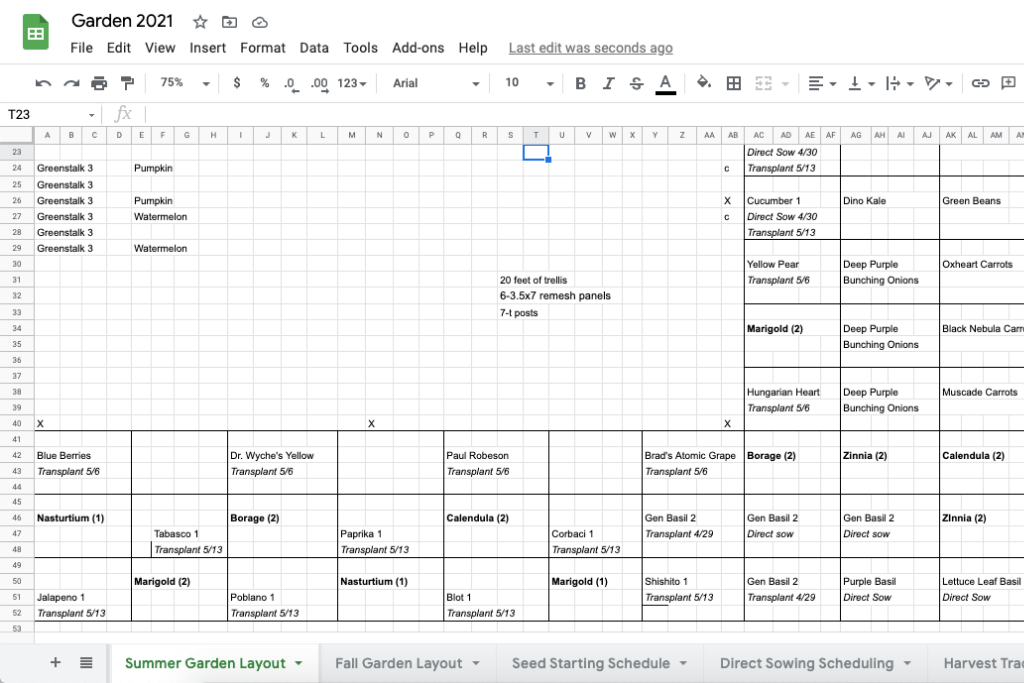
Download Your Free Seed Starting Plan + Tracker
Now, I’ve spent the last couple months fleshing out the details in the seed starting plan and garden layout spreadsheet. Rather than keep it to myself, I’ve made a blank shareable version you’re welcome to copy and fill out for yourself. You’ll see in the layout tabs I’ve left the outlines of my beds to give you an idea, but just clear it out and add back in your own.
If you’re more an analog kinda person, I’ve also designed this pdf you can download and print out. It was mostly me playing around in Canva, but if it saves you a step and gives you some peace of mind, I’m happy to share it!
You can access the spreadsheet here: https://bit.ly/2N7Cfsk
Or download the pdf here (it’s two pages):
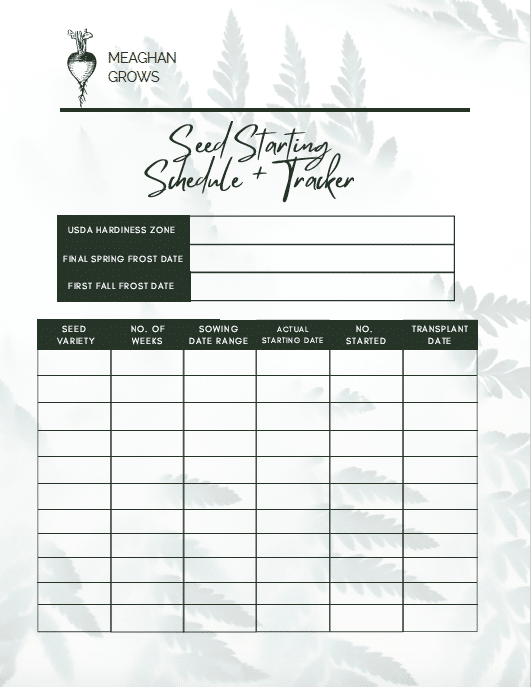
There are definitely a number of websites that will generate a schedule for you. Here’s one from the Farmer’s Almanac and another from the National Gardening Association. These are great tools, but I’d still recommend creating your own. For one, all the internet-generated schedules are different. You may get conflicting information, so creating your own schedule lets you do your own critical thinking in figuring out what works for you. Also, these calendars just go off zip code, so they don’t account for microclimates and other fluctuations.
And making your own seed starting plan is a fun way to occupy yourself until seed sowing time!

Pin it for later:
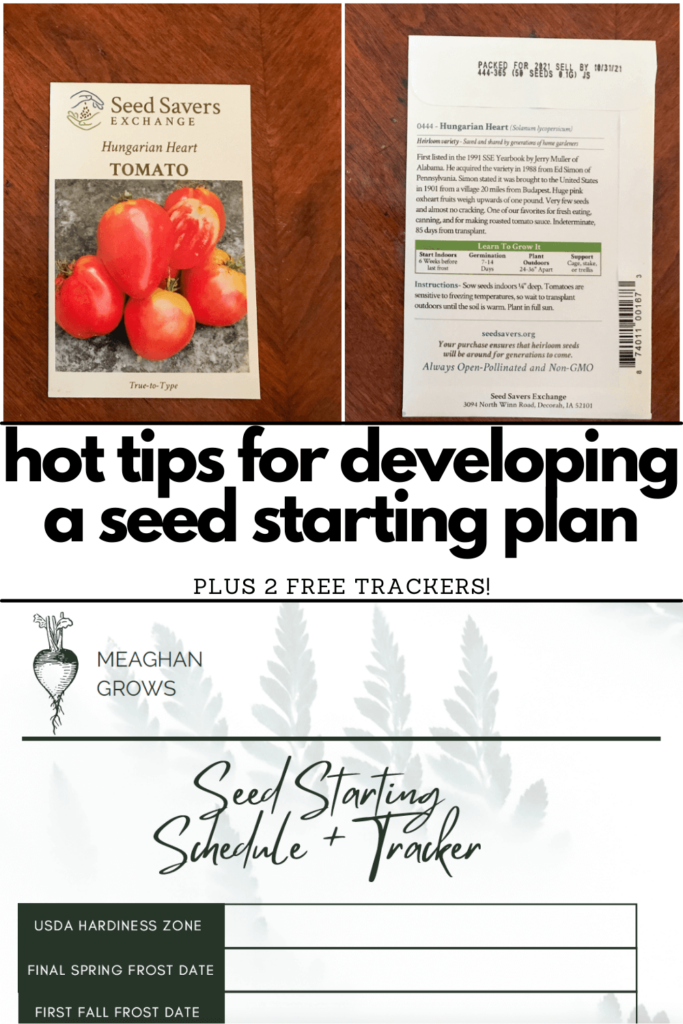


Leave a Reply